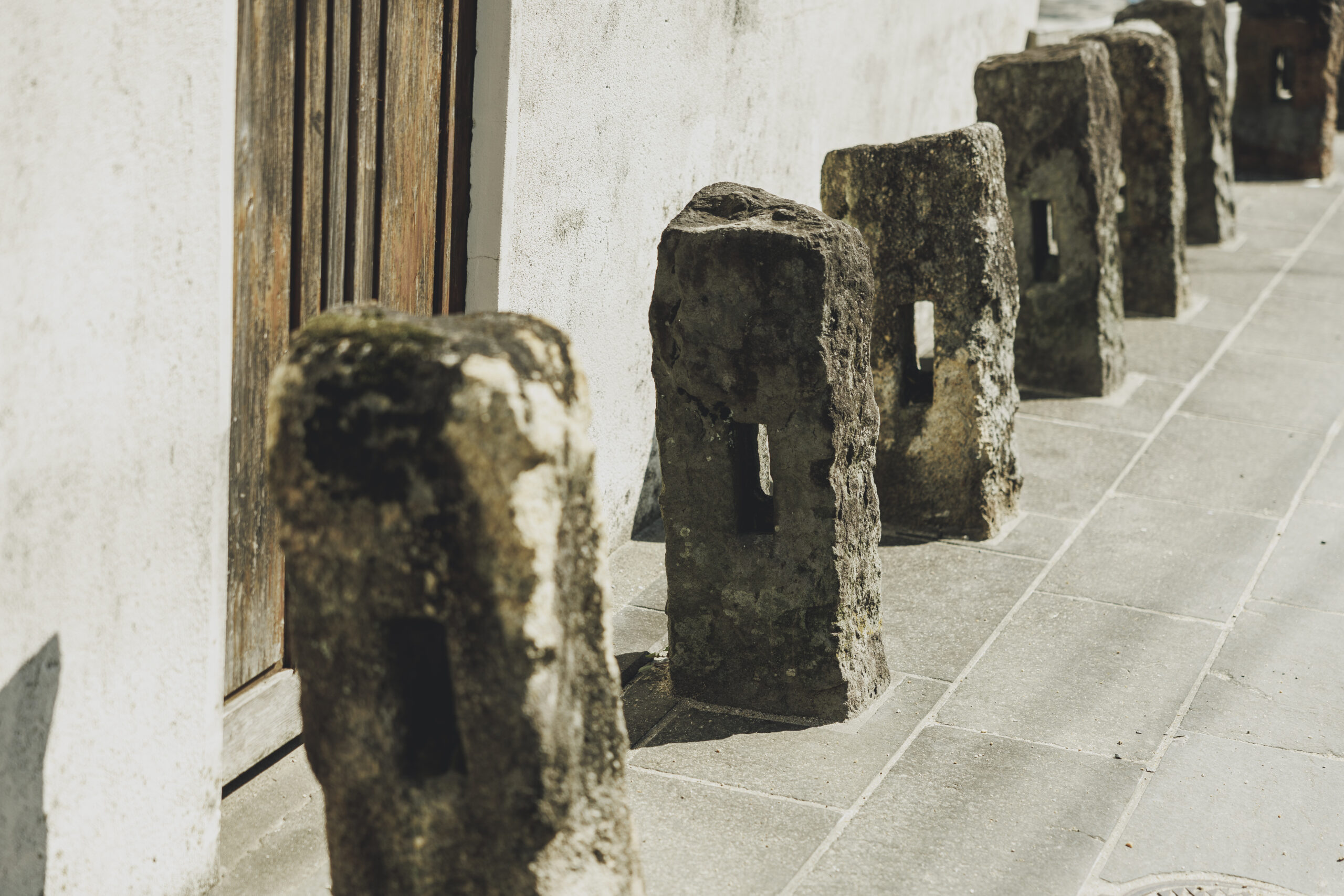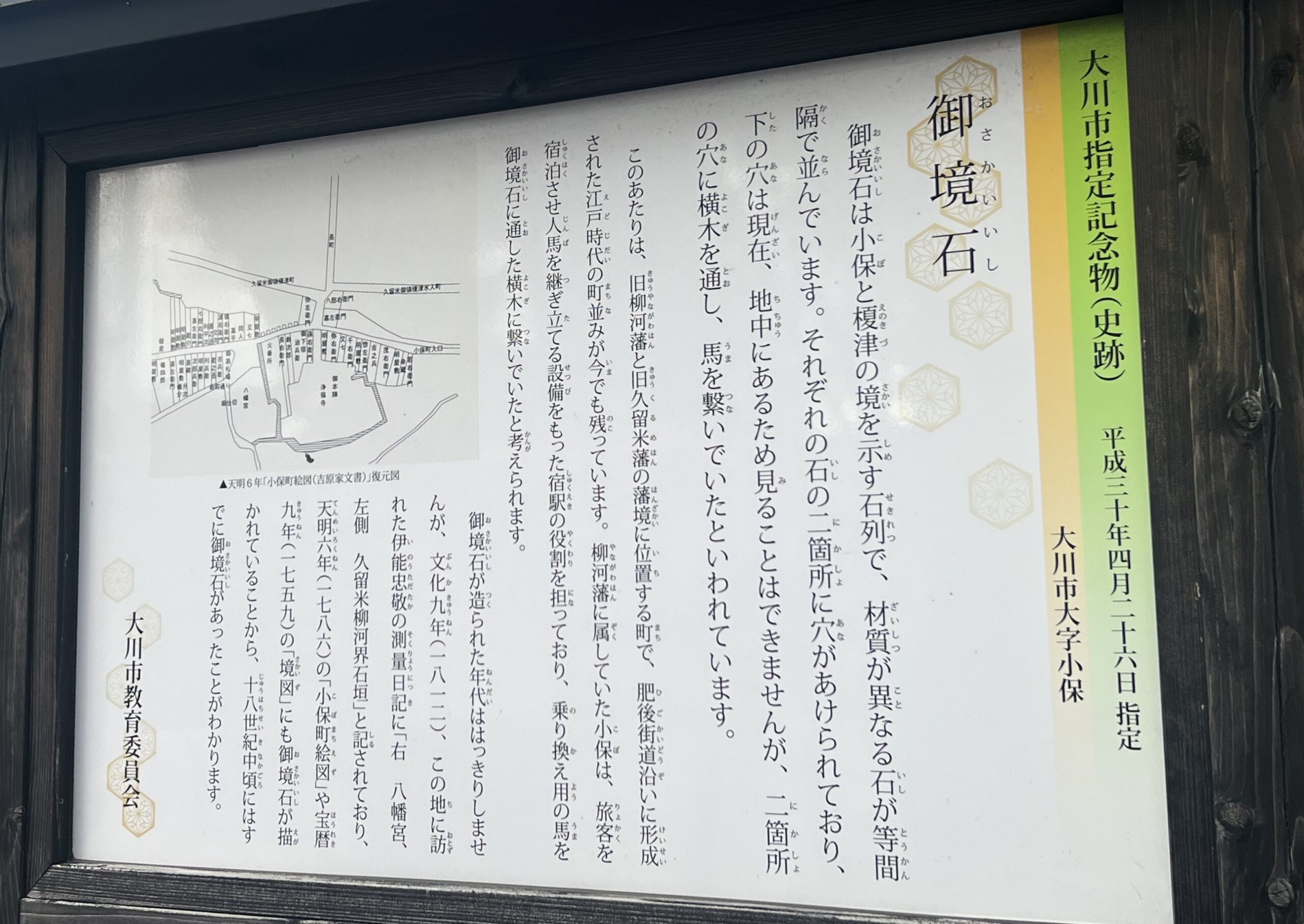





This row of stones, known as sekiretsu or osakaiishi in Japanese, indicated the boundary of a clan's domain. In the Edo period (1603 - 1868), this area belonged to the Yanagawa Domain in the Kobo District and the Kurume Domain in the Enokizu District and prospered from its inns and port. This row of stones is located on the border of the domains, and currently, 28 stone pillars remain. The stone pillars vary in the type of stone and size, but there are two holes drilled at the same distance from each other. It is said that a crossbar was placed between these holes to which to tie horses. It is a unique feature in Japan that serves as both a boundary between the domains and a horse-joining station. These stones symbolise the townscape of the Kobo and Enokizu areas and have been designated as a Tangible Cultural Property by Ōkawa City.
During the Edo period, the boundaries between neighboring clan's domains were so strict, that border control gates were set up to allow people to come and go between domains. However, Kobo in the Yanagawa Domain and Enokizu in the Kurume Domain came to form a unique boundary town between the clans, separated by the rows of stone pillars.
It is said that Kobo functioned as an inn-town, where passengers were accommodated, and horses were hitched to wooden beams between the rows of stones. The date of construction of the stones is unknown, but in the diary of Inō Tadataka, who stopped by the area in 1812 to make a survey, he mentions, "There is a Hachimangu Shrine on the right and the Kurume-Yanagigawa boundary stone wall on the left." In addition, it is known that the stones existed in the middle of the 18th century, as they were depicted in the "Kobo-Chō Pictorial Map" of 1786. These stones have been designated a Tangible Cultural Property by Ōkawa City.